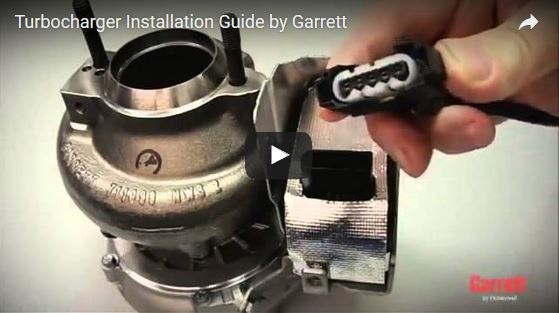Can you suggest what is wrong with my vehicle from inspecting the turbo?
In the majority of cases yes! In fact it is surprising how much an experienced turbocharger specialist can tell about a vehicle's engine condition and the manner in which it is maintained and tuned by examining the turbocharger...
The images below are just a few examples of vehicle diagnosis via the turbocharger.
The most common cause of turbo failure is carbonisation and it is easily diagnosed once a turbocharger is stripped. Most turbocharged vehicle owners would have no doubt heard or read about the importance of regular oil changes and allowing your vehicle to idle for a couple of minutes prior to turning it off, however few probably understand why carbonisation occurs which is further explained here ...
Contaminated oil, caused by engine wear or lack of maintenance is also easily diagnosed as it scores or leaves scratch marks on the bearings, bore and shaft in that order due to the hardness of the materials and pending how long the vehicle has been driven with contaminated oil. Engine wear is the most common cause. The thrust bearing may also suffer severe wear as the small oil holes feeding the thrust bearing or in the thrust bearing itself may also become blocked by the contaminates.
Dust will leave small nibbling marks on the edge of the compressor wheel blades and is due to either poor maintenance of the air cleaner system, the wrong size air cleaner or a split in a hose or loose intake pipe from the air cleaner assembly to the front of the turbocharger. It is more common in off road vehicles however some owners remove the air cleaner in order to try and gain more power and suffer the same fate. The same dust also enters the combustion chamber and scores the cylinder bores resulting in blow-by or complete engine failure.
Thrust wear on the inlet side of the turbocharger indicates a problem on the exhaust side of the turbocharger, the reverse of what sounds logical. If a muffler has collapsed, exhaust pipe damaged or too small an exhaust system will cause back pressure in the exhaust housing. Naturally one would think this would push the exhaust wheel forward and consequently wear the exhaust side of the thrust bearing which is not the case. Try to imagine pressure as water and the exhaust wheel blades the propeller on a boat in reverse. Due to its design when it spins in this pressure, (water), it will pull itself backwards towards the rear of the turbocharger hence wear the front side or inlet side of the thrust bearing.
Wear on the exhaust side of the thrust bearing, like above, is due to a problem on the inlet side of the turbocharger but from different causes. If there is a restriction on the pressure side of the inlet, like the exhaust wheel described above, it will try to pull itself forward but if the restriction is on the non-pressure side of the inlet such as a totally blocked air cleaner, the turbocharger will create a vacuum & the normal pressure on the exhaust side of the turbocharger will force the wheels forward, again wearing the exhaust side of the thrust bearing.
Another cause for thrust bearing wear is the wrong size turbocharger being fitted to a vehicle. When fitting a turbocharger to a vehicle you must check both the inlet manifold pressure, (boost), and exhaust manifold pressure. These pressures should be roughly equal from idle all the way through to full boost. I have seen vehicles with 15 lbs of boost running over 50 lbs of exhaust manifold pressure causing thrust wear and total turbocharger failure.
Impact damage on the inlet side of the turbocharger will be caused by something foreign entering the turbocharger, no matter how small such as dust mentioned above to something larger which will instantly cause a major turbocharger failure. Impact damage to the exhaust blades can be more worrying as it is normally due to a piece of engine, such as piston or exhaust valve colliding with the exhaust wheel tips causing them to bend, chip or break off altogether.
Bluing of the turbine shaft obviously indicates excessive heat however there can be a number of causes including lack of oil due to carbonisation, oil quality or oil pressure. Excessive exhaust temperatures due to lean fair/fuel mixtures, incorrect engine or ignition timing, wrong sized turbocharger, damaged or too small an exhaust system are amongst the most common causes.
Turbocharger TroubleshootingNever continue to operate an engine with a suspect or noisy turbocharger as this could result in total engine failure! | |||
|---|---|---|---|
| IMPACT DAMAGE | 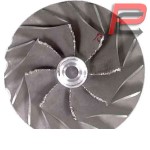 |
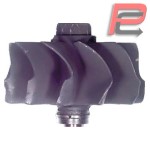 |
Impact damage caused by foreign material entering the turbine housing or compressor housing is clearly visible on the turbine wheel & impeller. Never continue to operate a turbocharger with damaged blades as the rotor balance will be affected and this could impact its service life. |
| INSUFFICIENT OIL SUPPLY |
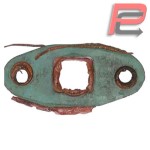 |
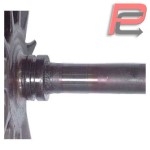 |
Insufficient oil supply can be attributed to the following: |
| CONTAMINATED OIL |
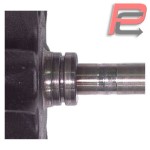 |
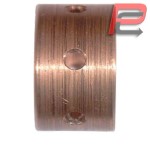 |
Dirty oil damages the turbocharger by causing heavy scoring of critical bearing surfaces. To avoid damage, oil and filters should be of a quality recomended by an OEM. These should be changed when a new turbocharger is fitted and at regular intervals according to the vehicle/engine manufacturer’s specification. Dirty oil damage could result from: - Blocked, damaged or poor quality oil filter. |
| CARBONISATION | 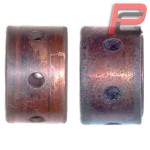 |
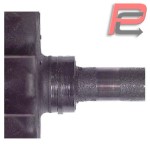 |
Failure from excessive exhaust temperatures or hot shutdown of engine results in carbon build-up. It is recommended that you idle the engine for 2 to 3 minutes to cool the bearing system before shutting down. Turbine end heat soak into the bearing housing results in oil carbonisation and corrosion of the bearing system. The main damage occurs to the shaft seal ring and grooves, turbine end bearing and bearing housing oil drain cavity blockage. Carbon build-up can be caused by: - Hot shutdown of engine. |
| Before changing your turbocharger, please make sure that you have correctly identified the cause of the fault: | |||

